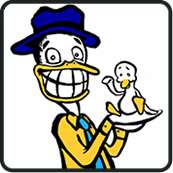Overview: Karate is the descendant of very early martial arts styles. In the tenth century an ancient art called Te, from the island of Okinawa, was unified with Chinese and Japanese combat styles to create what would become kara-te, commonly translated as "empty hand." The name "empty hand" signifies the discipline's emphasis on self-defense without weapons, although karate students do not reject weapons altogether (that would be the "empty head" style of martial arts). While there are many styles of karate taught worldwide, one of the of the most popular styles in North America is the Japanese Shotokan style, which emphasizes low stances, open movements, and powerful thrusting kicks. And yes, you really do get to break boards as an advanced karate student. Big deal. As martial arts superstar Bruce Lee once remarked, "Boards do not fight back."
Physical emphasis: Karate is a very energetic martial art, focusing on strikes and kicks. These will strengthen both upper and lower limbs. Karate also improves strength, flexibility, and cardiovascular fitness.
Availability: School availability is high, in urban centers as well as in suburban and rural mini-malls nationwide.
SoYouWanna ask a martial arts question? Ask one on Answerbag.com.
SoYouWanna know more? Check out our full-length article SYW study martial arts?

